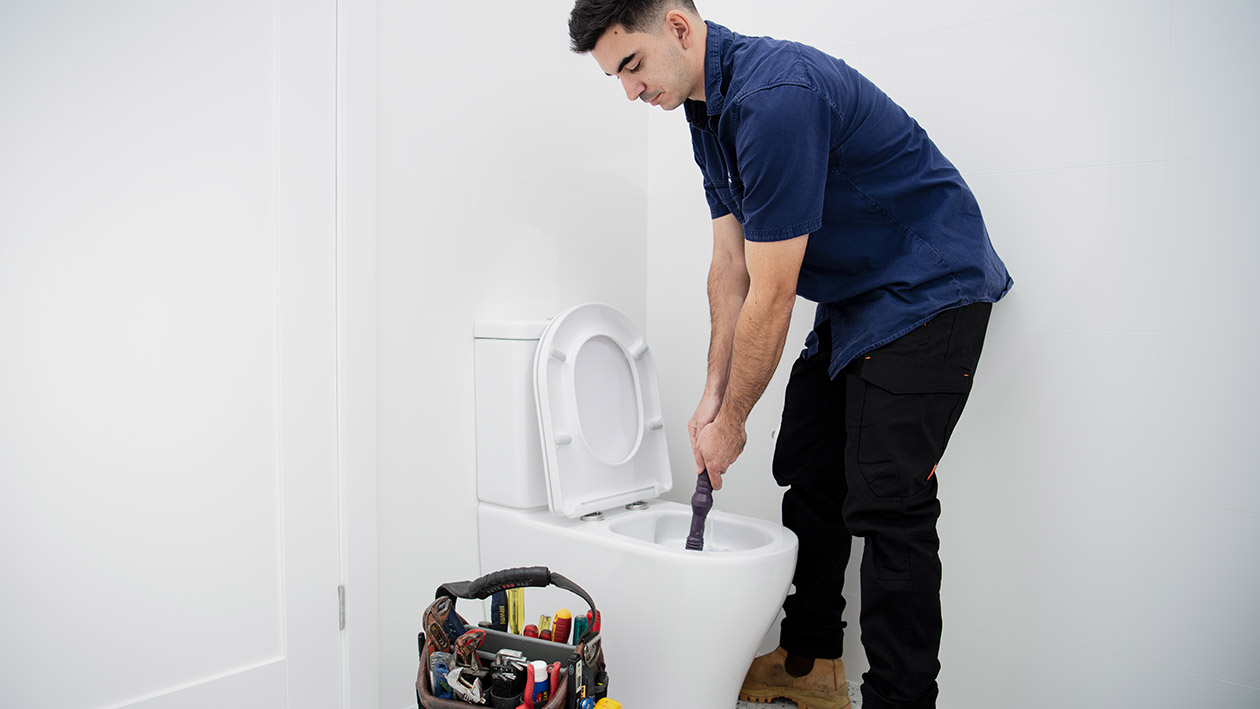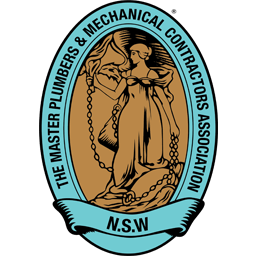A blocked toilet is a nightmare. The problem can arise unexpectedly, disrupting your day and even causing damage if left unresolved. But don’t panic! This guide provides the fastest, easiest ways to get your toilet flushing again. We’ll cover everything from simple plunging techniques to identifying when to call a plumber.
Before You Start: Safety First!
Working on a blocked toilet can expose you to bacteria and potentially harmful chemicals. Always take these precautions:
- Wear Rubber Gloves: Gloves will protect your hands from germs and grime.
- Ventilate the Area: Open a window or turn on the fan to circulate air.
- Never Mix Chemicals: Combining different drain cleaners can create toxic fumes or dangerous reactions.
What’s Clogging Your Toilet? A Quick Assessment
Before grabbing the plunger, assess the situation. Answering these simple questions will help you choose the best solution:
- Is the Water Level High? If the water is close to the rim or overflowing, proceed cautiously. Do not flush the toilet again. You need to reduce the water level before attempting to unblock it.
- Can You See the Obstruction? If you can identify the blockage (e.g., a toy or excessive toilet paper), you can remove it manually (with gloves!).
- Is this a Recurring Problem? If your toilet frequently blocks, the plumbing system may have a deeper problem.
Based on your answers, choose the solution that best matches your situation.
What Are the Fastest Ways To Unblock a Toilet?
Here are the fastest ways to unblock a toilet, starting with the easiest methods:
1. The Plunger: Your First Line of Defence
A plunger creates pressure to dislodge blockages. Here’s how to use it effectively:
- Choose a plunger with a flange (the extension at the bottom that creates a seal).
- Position the flange over the toilet’s drain opening, ensuring a good seal.
- Push and pull the plunger up and down vigorously for several minutes.
- If the water drains, flush the toilet to check if the blockage is gone.
Dylan Attard, a licensed plumber at True Flow Plumbing and Drains, has this expert tip: “When it comes to unblocking toilets, make sure you are using the right kind of plunger because it’s all about applying the right kind of pressure. A sink plunger’s flat design is great for sucking up clogs in sinks and tubs. But for toilets, you need a plunger that pushes the blockage through. That’s where the toilet plunger’s flange comes in—that extra cup-shaped extension at the bottom forms a tight seal to deliver a powerful force directly into the drain to get your toilet working properly again.”
2. Hot Water and Dish Soap: Powering Through Clogs
Hot water and dish soap can break down greasy blockages. This method works best when the water level is not too high:
- Pour a generous amount of dish soap into the toilet bowl.
- Heat a large pot of water (not boiling, as it could damage the porcelain).
- Carefully pour the hot water into the bowl from waist height to create pressure.
- Let the mixture sit for several minutes, then flush the toilet.
3. Baking Soda and Vinegar: The Natural Approach
This fizzy combination is a great cleaner and can help break down stubborn clogs:
- Pour one cup of baking soda into the toilet bowl.
- Slowly pour two cups of vinegar into the bowl, allowing it to fizz.
- Let the mixture sit for at least 30 minutes (longer for tougher clogs).
- Flush the toilet with hot water.
Baking soda and vinegar can also help get rid of organic matter and debris in kitchen drains, sinks and pipes.
4. Wire Coat Hanger: A DIY Solution
A metal or wire coat hanger can sometimes dislodge obstructions, but use caution to avoid scratching the porcelain:
- Before you start, ensure you have a Bucket handy so you can put the dirty coat hanger in it when finished.
- Untwist a wire coat hanger and straighten it out.
- Wrap the end with a cloth or duct tape to protect the toilet bowl.
- Carefully insert the hanger into the drain opening, pushing and twisting gently to dislodge the blockage.
- Remove the hanger and flush the toilet.
5. Epsom Salt Bomb
This method uses Epsom salt to break down clogs:
- Boil a full kettle of water and let it cool slightly.
- Pour a generous amount of Epsom salt into the toilet bowl.
- Slowly pour the hot water into the bowl.
- Let it sit for about 15 minutes.
- Flush to see if the blockage has cleared.
When DIY Doesn’t Cut It: Calling a Plumber
You’ve tried the plunger, the natural remedies, maybe even the wire hanger trick – but that toilet is still stubbornly blocked. Don’t despair! Sometimes, admitting defeat and calling in a licensed plumber is best.
Here are a few signs you’re dealing with a problem that needs professional attention:
- Multiple Methods Fail: If you’ve tried several solutions without success, there might be a more complex blockage deeper in the plumbing system.
- Recurring Blockages: Frequent clogs, even after using a plunger, could indicate a recurring issue with your toilet or drain lines.
- Sewage Backup: If sewage is backing up into your toilet or other drains, this is a serious plumbing issue that requires immediate professional help.
Attempting complex repairs yourself can sometimes lead to more damage and costly repairs down the line. Licensed plumbers may have just the tools you need to fix that pesky clog, including a Plumber’s snake (auger) or a particular chemical substance.
Keep Things Flowing: Preventing Future Clogs
No one wants to face a blocked toilet ever again! Follow these simple tips to keep your bathroom plumbing clog-free:
- Be Mindful of What You Flush: Only human waste and toilet paper belong in the toilet. Flushing anything else—like wipes, feminine hygiene products, cotton balls, or hair—is a surefire way to clog the system.
- Don’t Overdo It: Avoid flushing large amounts of toilet paper simultaneously. Even if it’s labelled “flushable,” excessive amounts can overwhelm plumbing systems.
- Regular Maintenance: Once a month, pour a cup of baking soda down the toilet, let it sit for 30 minutes, and then flush. This simple practice helps to neutralise odours and keep things flowing smoothly.
Following these tips and being mindful of what goes down the drain can significantly reduce your chances of experiencing another toilet blockage!



